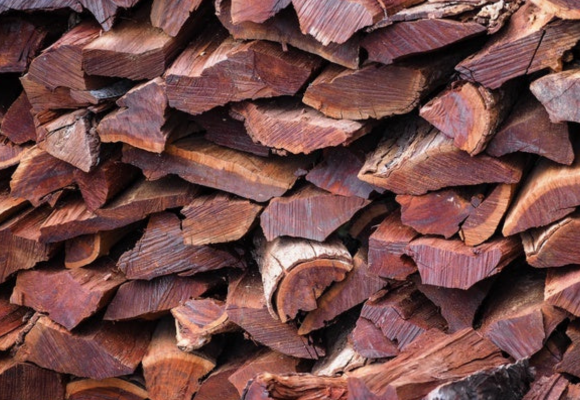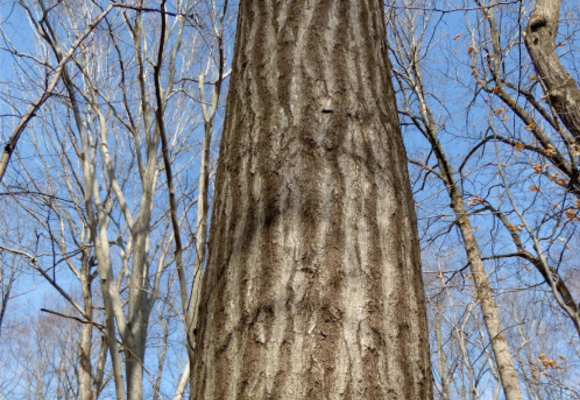When it comes to infusing meats with a rich, smoky flavor, the choice of wood plays a pivotal role. Among the myriad of options available to culinary enthusiasts and pitmasters, red oak emerges as a standout choice. Renowned for its robust flavor profile, red oak has become a favorite in the smoking community for its ability to enhance a variety of meats. This article delves into the characteristics of red oak, examining why it’s an excellent selection for smoking and how it compares to other woods in terms of flavor, burn rate, and compatibility with different types of meat. Whether you’re a seasoned smoker or just starting out, understanding the nuances of red oak can elevate your smoking game to new heights.
Characteristics of Red Oak for Smoking
Red oak, a member of the oak family, is known for its dense and hard wood. It is readily available in many parts of North America, making it a convenient choice for many barbecue enthusiasts. The wood itself has a medium to coarse texture and a prominent grain, which contributes to its burning properties.
When it comes to smoking, red oak provides a medium smoke flavor that is stronger than fruit woods like apple or cherry, but milder than hickory or mesquite. This balanced flavor profile makes red oak a great all-purpose smoking wood.

Benefits of Using Red Oak
Red oak, known for its robust and versatile qualities, has become a favored choice among smoking enthusiasts. Its unique characteristics offer several advantages, making it a go-to option for a variety of smoking needs. Below, we delve into the specific benefits of using red oak for smoking, highlighting why it is such a popular choice.
- Versatility: Red oak is suitable for a wide range of meats, making it a great choice for those who enjoy smoking different types of protein.
- Availability: As a common hardwood in North America, red oak is relatively easy to find and purchase, whether in chunks, chips, or logs.Red oak is widely available in many regions, especially in North America. Its abundance makes it an accessible choice for many smokers, whether they are looking for wood chips, chunks, or logs. The ready availability also often translates to cost-effectiveness, making it a practical choice for regular smokers.
- Long Burning: Red oak burns slowly and steadily, providing a consistent smoke that is ideal for long smoking sessions.key advantage of red oak is its consistent burn. The wood’s density and hardness contribute to a slow and steady burn, providing a continuous supply of smoke over extended periods. This feature is particularly beneficial for long smoking sessions, crucial for meats that require prolonged exposure to smoke for optimal flavor development.
- Balanced Flavor: The flavor imparted by red oak is strong enough to be noticeable, but not so overpowering that it masks the natural flavor of the meat. Flavor Profile: One of the most significant benefits of red oak is its distinctive flavor profile. It imparts a rich, smoky taste that is both earthy and slightly sweet. This flavor is more pronounced than fruit woods like apple or cherry but less intense than hickory or mesquite. This balance makes red oak an excellent choice for those who prefer a noticeable, yet not overpowering, smoke flavor.
as well these are the more valable pros of using these wood for smoking
- Versatility in Pairing: Red oak’s balanced flavor profile makes it incredibly versatile. It complements a wide range of meats, including beef brisket, pork shoulders, ribs, poultry, and even some fish varieties like salmon. This versatility allows chefs and home smokers to use red oak across various dishes, ensuring a consistently good smoke flavor.
- Enhancing Meat’s Natural Flavors: While providing its unique taste, red oak also enhances the natural flavors of the meat. It doesn’t overpower the intrinsic flavors of the smoked product but rather complements and accentuates them, resulting in a more complex and satisfying taste experience.
- Suitability for Various Cooking Styles: Red oak is not only beneficial for traditional smoking methods but also adaptable to different cooking styles, including grilling and barbecuing. Its ability to impart flavor at varying heat levels makes it a versatile choice for different culinary techniques.
- Environmental Sustainability: As a locally sourced and abundant wood in many areas, red oak can be a more sustainable choice for smoking. By choosing locally sourced red oak, smokers can reduce their environmental impact compared to using imported or less sustainable wood types.
In conclusion, the benefits of using red oak for smoking are manifold. Its balanced flavor profile, versatility, consistent burn, and wide availability make it an excellent choice for both novice and experienced smokers. By understanding these benefits, one can fully appreciate the art of smoking and the unique qualities red oak brings to this culinary tradition.

Tips for Smoking with Red Oak
- Preparation: Before using red oak for smoking, it’s important to ensure that the wood is properly seasoned. This means it should be dried for several months to reduce its moisture content. Using green or unseasoned wood can result in an unpleasant, acrid smoke.
- Combining Woods: For a more complex flavor profile, consider combining red oak with other types of wood. For example, mixing it with a fruit wood can add a subtle sweetness to the smoke.
- Temperature Control: Maintaining a consistent temperature is crucial when smoking meats. Red oak burns hot, so it’s important to monitor the temperature closely to avoid overcooking.
- Experimentation: Don’t be afraid to experiment with different meats and smoking durations. Red oak can produce varying results depending on the type of meat and the length of smoking time.
Types of Oak for Smoking
Oak is a highly preferred wood for smoking due to its strong yet versatile flavor profile. There are several types of oak, each imparting its unique characteristics and nuances to smoked foods. Below, we’ll explore the different types of oak commonly used for smoking, highlighting their individual qualities and best uses.
- Red Oak: Renowned for its robust flavor, red oak imparts a medium-strong smoke that is slightly sweet and earthy. It is versatile and pairs well with a wide range of meats, including beef, pork, and poultry. Red oak is particularly favored for its balanced flavor that enhances rather than overpowers the natural taste of the meat.
- White Oak: White oak is known for its slightly milder flavor compared to red oak. It provides a medium smokiness with a hint of sweetness, making it ideal for those who prefer a subtler smoke flavor. White oak is particularly popular for smoking fish and seafood, as well as pork and poultry.
- Post Oak: A staple in Texas barbecue, post oak is celebrated for its light, mild flavor. It imparts a subtle smokiness that doesn’t overshadow the meat’s natural flavors. Post oak is especially favored for smoking brisket, a tradition in Texas BBQ, due to its ability to enhance the meat’s flavor without being too overpowering.
- Live Oak: While not as commonly used as other types of oak, live oak can still be a good choice for smoking. It has a stronger, more intense flavor than white or post oak, making it suitable for meats that can stand up to a robust smoke, like beef and game meats.
- Bur Oak: Bur oak offers a unique flavor profile, with a medium to strong smoky taste. It’s a good match for hearty meats like beef and lamb, providing a rich, deep flavor that complements the strong flavors of these meats.
- Black Oak: Similar to red oak, black oak provides a strong, pronounced smoke flavor. It is best used with bold-flavored meats, such as beef or game, and can be too intense for lighter meats like chicken or fish.
- English Oak: Popular in European smoking traditions, English oak offers a dense, rich smoke with a slightly sweet and nutty flavor. It’s excellent for traditional smoked fish, pork, and game meats, and is often used in combination with other woods to create a complex flavor profile.
Each type of oak wood brings its unique flavor and smoking properties to the table, making oak a versatile and widely favored choice for smoking a variety of foods. Whether you’re smoking beef brisket with post oak or experimenting with English oak for smoked fish, understanding these differences can help you select the right oak wood to enhance your smoking experience.
Conclusion
Red oak is a fantastic choice for smoking due to its balanced flavor, versatility, and availability. Whether you’re a seasoned smoker or just starting out, red oak can help you achieve delicious results. By following these tips and experimenting with different combinations and techniques, you can make the most of this wonderful smoking wood.

